The Featured Creatures collection provides in-depth profiles of insects, nematodes, arachnids and other organisms relevant to Florida. These profiles are intended for the use of interested laypersons with some knowledge of biology as well as academic audiences.
Introduction
The little metalmark, Calephelis virginiensis (Guérin-Ménéville), is one of three allopatric metalmarks found in the eastern United States. Although the little metalmark is one of our tiniest butterflies, it is one of our most beautiful. It is the only metalmark found in the southeastern coastal plain.
Distribution
Southeastern coastal plain from southeastern Virginia to eastern Texas in uplands and marginal wetlands, sandhills, flatwoods, pine savannas, prairies, and on roadsides.
Description
Adults
The wings vary in color from rusty orange to orange-brown and have metallic silver lines on the wings (Figure 1)—the characteristic from which the family gets the common name "metalmarks". The wingspan is 12–25 mm.
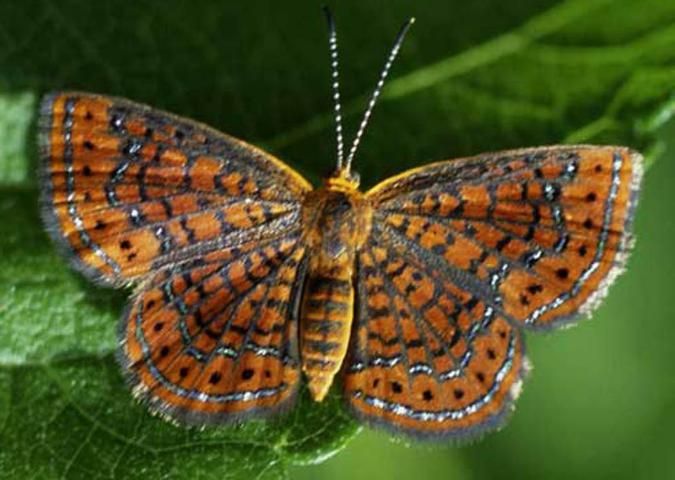
Credit: Jerry F. Butler, UF/IFAS
Eggs
The flattened eggs are reddish-brown with white sculpturing (Figure 2).
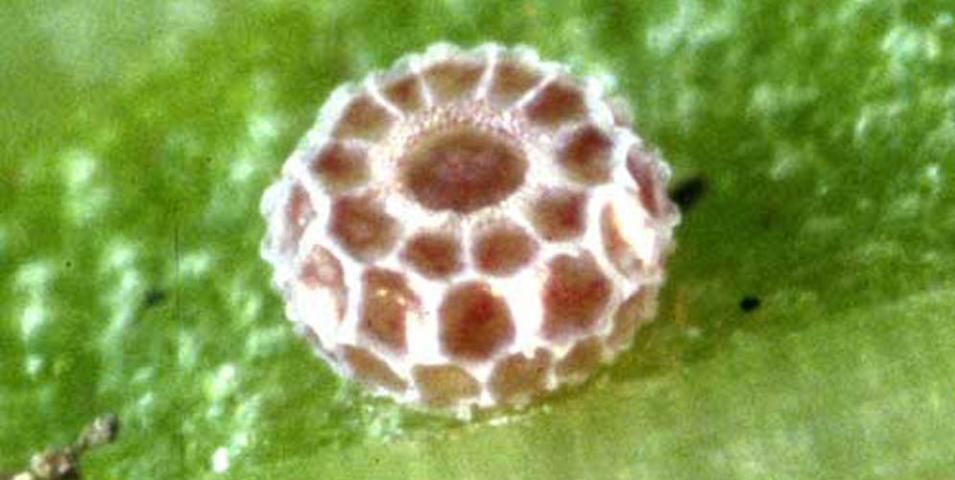
Credit: Jerry F. Butler, UF/IFAS
Larvae
Caterpillars are light green, stippled with many tiny white dots. There are dorsal and lateral rows of long white setae on each side and a rust-brown sub-dorsal spot on each side on abdominal segments two through seven (Figures 3 and 4).
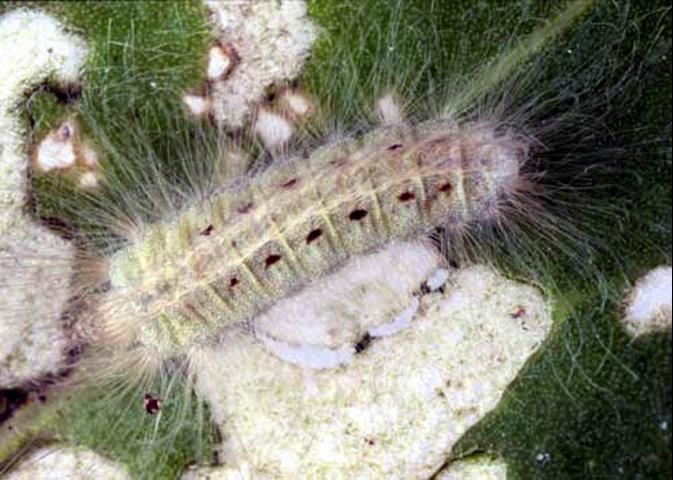
Credit: Marc Minno, Suwannee River Water Management District
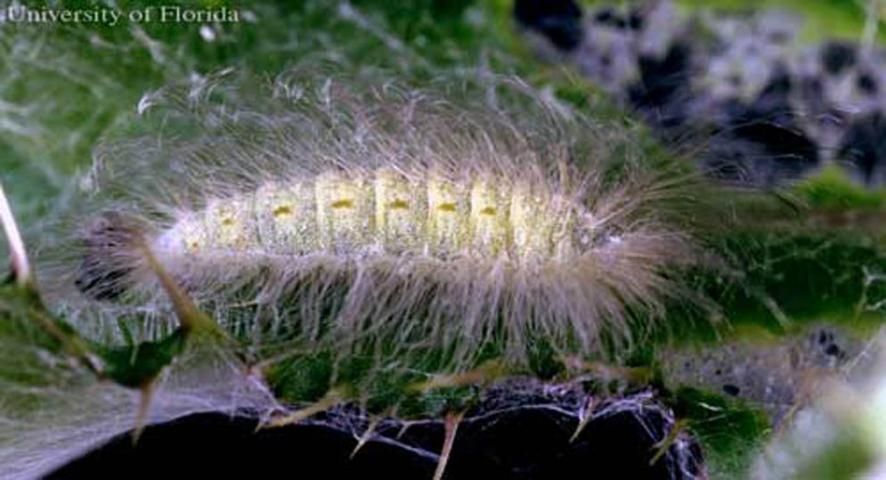
Credit: Jerry F. Butler, UF/IFAS
Pupae
The pupae are green with dorsal and lateral rows of black spots (Figure 5). The pupa is covered with setae from the last instar larva—possibly for protection from predators or parasitoids.

Credit: Jerry F. Butler, University of Florida
Life Cycle and Biology
This metalmark is common throughout Florida, except for the Keys. At least three generations are produced each year in northern parts of its range and multiple generations occur year-round in Florida (Scott 1986). It is most common during late summer and fall in Florida, but caterpillars are present from March through November (Minno et al. 2005).
Little metalmarks are low-flying and are not commonly seen until they land and rest with their wings outstretched. Adults tend to orient themselves in an upside-down position when resting. Males patrol for females but their patrolling is fairly localized. Flat-flowered composites (Asteraceae) seem to be the preferred nectar sources.
Eggs are laid singly on the underside of the host leaves. Caterpillars feed mostly at night (Cech and Tudor 2005) on the undersides of the leaves but leave the translucent upper cuticle intact. These small circular windows in the leaves are a good sign to look for when searching for the caterpillars. Partly grown caterpillars are probably the over-wintering stage (Opler and Krizek 1984).
Hosts
Little metalmark caterpillar host plants are herbs in the Aster Family (Asteraceae) including yellow thistle, Cirsium horridulum Michx. (Figures 6 and 7), vanillaleaf, Carphephorus odoratissimus (J.F.Gmel.) H.Hebert (Minno et al. 2005, Wagner 2005) and sometimes climbing hempvine, (Mikania scandens) (L.) Willd. (Figure 8) (Minno et al. 2005). Caterpillars are especially cryptic on the undersides of the leaves of yellow thistle where their hairs blend in with the long white hairs of the plant.
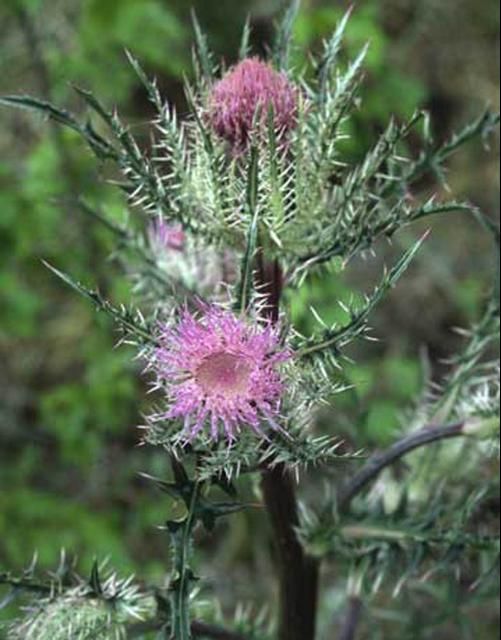
Credit: Marc Minno, Suwannee River Water Management District
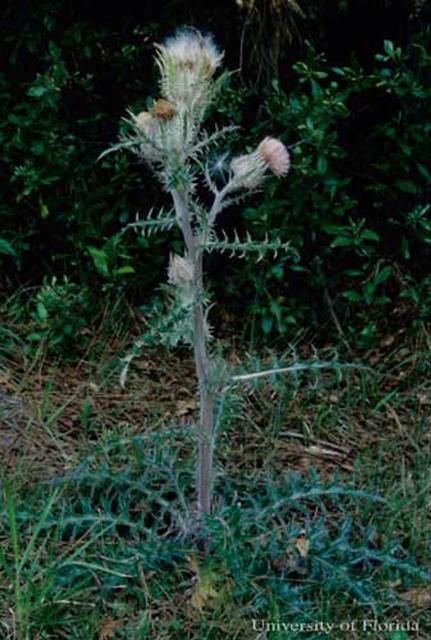
Credit: Marc Minno, Suwannee River Water Management District

Credit: Donald W. Hall, UF/IFAS
Yellow thistle flowers vary in color and may be white, yellow, or purple.
Photographs of vanillaleaf are available at the Institute for Systematic Botany (University of South Florida).
Selected References
Cech R, Tudor G. 2005. Butterflies of the East Coast. Princeton University Press. Princeton, New Jersey. 345 pp.
Minno MC, Butler JF, Hall DW. 2005. Florida Butterfly Caterpillars and their Host Plants. University Press of Florida. Gainesville, Florida. 341 pp.
Opler PA, Krizek GO. 1984. Butterflies East of the Great Plains. The Johns Hopkins University Press. Baltimore, Maryland. 294 pp.
Scott JA. 1986. The Butterflies of North America: A Natural History and Field Guide. Stanford University Press. Stanford, California. 583 pp.
Wagner DL. 2005. Caterpillars of Eastern North America. Princeton University Press. Princeton, New Jersey. 512 pp.